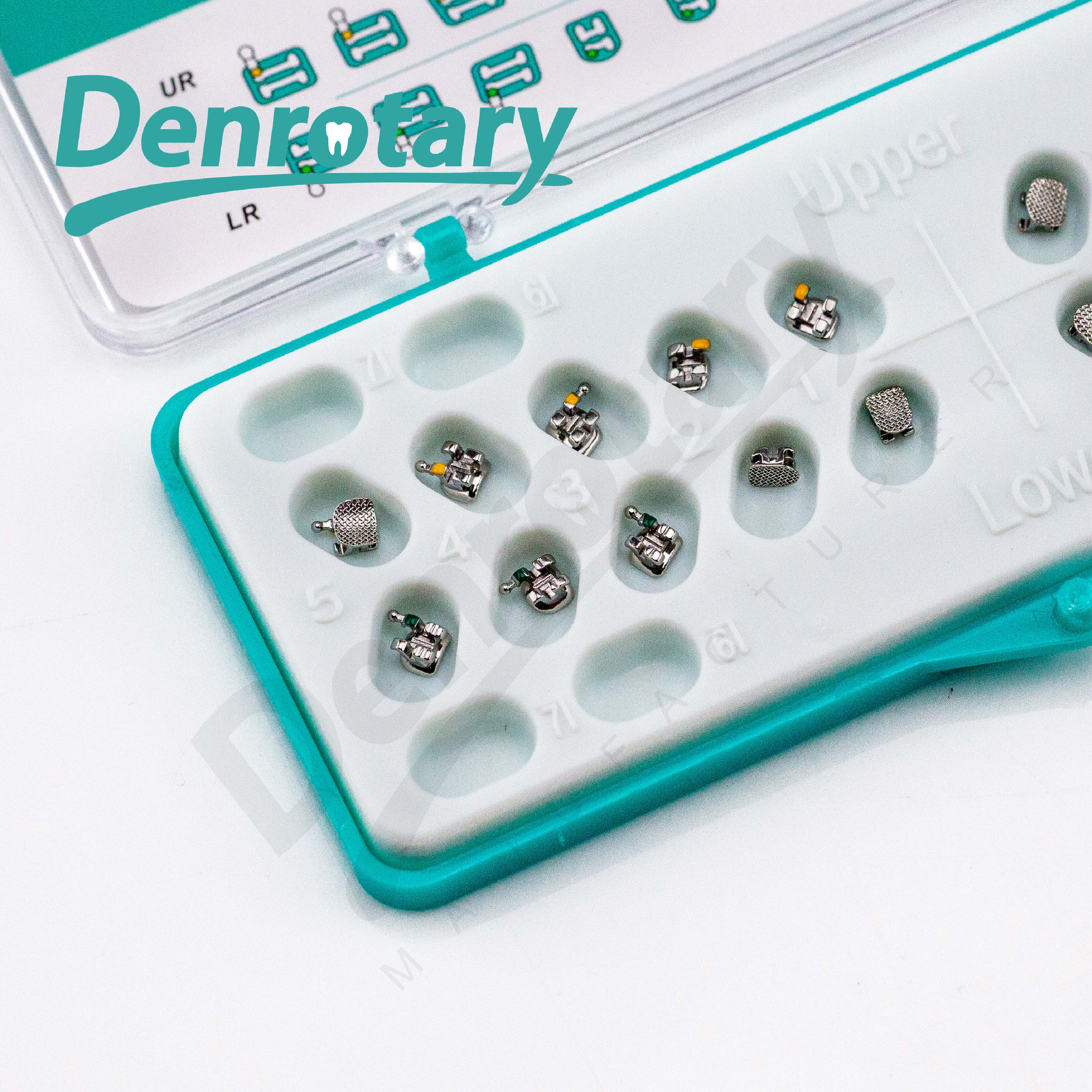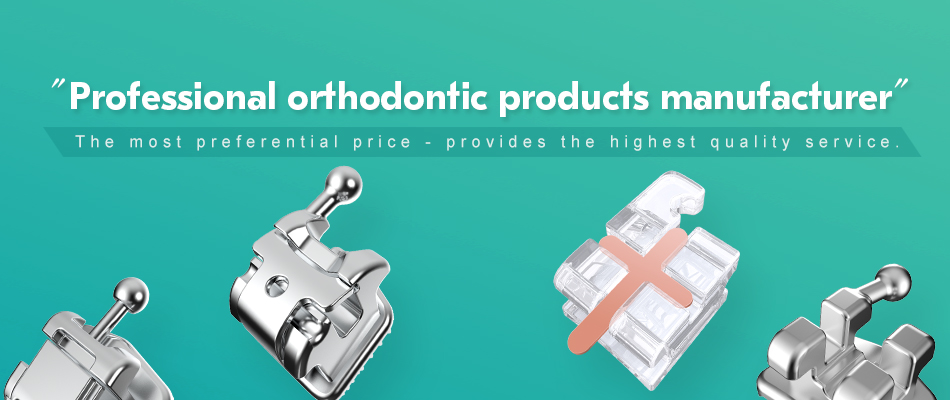High-retention orthodontic mesh base brackets are specialized devices that enhance the bond between brackets and teeth. Retention plays a crucial role in orthodontic treatment. It ensures that brackets stay securely attached during the alignment process. Using high-retention brackets can lead to improved treatment efficiency and better patient satisfaction.
Key Takeaways
- High-retention orthodontic mesh base brackets improve bonding strength, leading to better treatment outcomes and patient satisfaction.
- Choosing the right adhesive system is crucial for optimal retention; consider options like light-cured, self-adhesive, and dual-cure adhesives.
- Incorporating high-retention brackets can reduce the number of adjustments needed, shorten treatment duration, and enhance patient comfort.
Design Features of Orthodontic Mesh Base Brackets
Mesh Base Structure
The mesh base structure of orthodontic mesh base brackets plays a vital role in their effectiveness. This design features a network of small openings that allow for better bonding with dental adhesives. The mesh pattern increases the surface area, which enhances the mechanical retention between the bracket and the tooth.
When you choose orthodontic mesh base brackets, you benefit from this unique structure. The mesh allows the adhesive to flow into the openings, creating a stronger bond. This bond is crucial during the treatment process, as it helps keep the brackets securely in place.
Material Composition
The material composition of orthodontic mesh base brackets significantly impacts their performance. Most brackets use a combination of stainless steel and other materials to achieve durability and strength. Stainless steel is resistant to corrosion and provides excellent mechanical properties.
Some manufacturers also incorporate advanced materials like ceramic or composite resins. These materials can offer aesthetic advantages, especially for patients concerned about the visibility of metal brackets.
In addition to strength and aesthetics, the choice of materials affects the bonding process. High-quality materials ensure that the adhesive adheres effectively, contributing to the overall retention of the brackets.
By understanding the design features of orthodontic mesh base brackets, you can appreciate how these elements work together to enhance treatment outcomes.
Bonding Techniques for High-Retention Brackets
Adhesive Systems
Choosing the right adhesive system is crucial for achieving optimal retention with high-retention orthodontic mesh base brackets. Various adhesive systems exist, each with unique properties. Here are some common types:
- Light-Cured Adhesives: These adhesives harden when exposed to a specific light wavelength. They offer quick setting times and strong bonds. You can easily control the curing process, which helps prevent premature bonding failures.
- Self-Adhesive Systems: These adhesives do not require additional bonding agents. They simplify the bonding process and reduce the risk of contamination. You can apply them directly to the bracket and tooth surface, making them user-friendly.
- Dual-Cure Adhesives: These systems combine light-cured and self-adhesive properties. They provide flexibility in application and ensure a strong bond even in challenging areas. You can use them in various clinical situations.
When selecting an adhesive system, consider factors such as bond strength, ease of use, and the specific needs of your patients. A strong adhesive bond is essential for maintaining the position of orthodontic mesh base brackets throughout treatment.
Surface Treatments
Surface treatments enhance the bonding capabilities of orthodontic mesh base brackets. These treatments prepare the bracket surface to improve adhesion. Here are some common surface treatments:
- Acid Etching: This process involves applying an acid solution to the bracket surface. Acid etching creates micro-retentive features that increase the surface area for bonding. This treatment significantly improves the bond strength between the bracket and adhesive.
- Silane Coating: Silane agents can be applied to the bracket surface to enhance adhesion. These coatings create a chemical bond between the adhesive and the bracket. This treatment is particularly useful for ceramic brackets, where traditional bonding methods may be less effective.
- Plasma Treatment: This advanced technique uses ionized gas to modify the surface properties of the bracket. Plasma treatment increases surface energy, promoting better adhesive wetting. This results in a stronger bond and improved retention.

By utilizing effective bonding techniques and surface treatments, you can ensure that high-retention orthodontic mesh base brackets remain securely attached throughout the treatment process. These methods not only enhance bond strength but also contribute to overall treatment success.
Performance Comparison of Bracket Types
High-Retention vs. Traditional Brackets
When you compare high-retention orthodontic mesh base brackets with traditional brackets, you notice significant differences in performance. High-retention brackets feature a mesh base that enhances bonding strength. This design allows for better adhesive flow, creating a more secure attachment to the tooth. In contrast, traditional brackets often rely on a solid base, which may not provide the same level of retention.
Here are some key differences:
- Bond Strength: High-retention brackets typically offer stronger bonds. This strength reduces the risk of bracket failure during treatment.
- Treatment Efficiency: With high-retention brackets, you can expect fewer adjustments. This efficiency can lead to shorter treatment times.
- Patient Comfort: Patients often report less discomfort with high-retention brackets. The secure fit minimizes movement, leading to a more pleasant experience.
Clinical Outcomes and Effectiveness
Research shows that high-retention orthodontic mesh base brackets lead to improved clinical outcomes. Studies indicate that these brackets result in better alignment and fewer complications. You can expect more predictable results with high-retention brackets, which enhances overall treatment effectiveness.
Relevant Research Studies on Bracket Performance
Key Findings
Recent studies have provided valuable insights into the performance of high-retention orthodontic mesh base brackets. Researchers found that these brackets significantly improve bond strength compared to traditional options. In one study, high-retention brackets demonstrated a bond strength increase of up to 30%. This enhancement reduces the likelihood of bracket failure during treatment.
Another important finding is that patients experience shorter treatment times with high-retention brackets. A clinical trial showed that patients using these brackets completed their orthodontic treatment an average of three months earlier than those with traditional brackets. This efficiency can lead to increased patient satisfaction.
Implications for Practice
The findings from these studies have important implications for your practice. By choosing high-retention orthodontic mesh base brackets, you can enhance treatment outcomes. The increased bond strength means fewer adjustments and less chair time for your patients. Additionally, the shorter treatment duration can improve overall patient satisfaction and retention in your practice.
You should also consider the materials and bonding techniques used with these brackets. Research indicates that combining high-retention brackets with advanced adhesive systems can further enhance bond strength. Staying informed about the latest research will help you make better decisions for your patients and improve their orthodontic experience.
Practical Implications for Orthodontists
Treatment Planning Considerations
When you plan treatments using high-retention orthodontic mesh base brackets, consider several factors:
- Patient Needs: Assess each patient’s unique dental structure and treatment goals. Tailor your approach to meet their specific requirements.
- Bracket Selection: Choose the right type of high-retention bracket based on the complexity of the case. Some brackets may work better for specific malocclusions.
- Adhesive System: Select an adhesive that complements the bracket type. Ensure it provides strong bonding and suits the clinical situation.
By focusing on these elements, you can enhance the effectiveness of your treatment plans.
Patient Outcomes
High-retention brackets can significantly improve patient outcomes. Here are some benefits you can expect:
- Fewer Adjustments: With stronger bonds, patients experience fewer bracket failures. This leads to less time spent in the chair for adjustments.
- Shorter Treatment Duration: Research shows that patients often complete their treatment faster with high-retention brackets. This efficiency can boost patient satisfaction.
- Enhanced Comfort: Patients report greater comfort due to the secure fit of high-retention brackets. A stable bracket reduces discomfort during the alignment process.
Incorporating high-retention orthodontic mesh base brackets into your practice can lead to better treatment experiences for your patients. By focusing on effective treatment planning and understanding patient outcomes, you can elevate the quality of care you provide.
High-retention orthodontic mesh base brackets enhance treatment outcomes. They offer stronger bonds, reduce adjustments, and improve patient comfort. Ongoing research in orthodontic materials is vital. It helps you discover new techniques and materials. Future advancements may lead to even better bracket designs and bonding methods. Stay informed to provide the best care.
FAQ
What are high-retention orthodontic mesh base brackets?
High-retention orthodontic mesh base brackets enhance bonding strength between brackets and teeth, improving treatment efficiency and patient satisfaction.
How do bonding techniques affect bracket performance?
Effective bonding techniques, like adhesive systems and surface treatments, significantly improve the bond strength and retention of high-retention brackets.
Are high-retention brackets suitable for all patients?
Yes, high-retention brackets can benefit most patients. However, consult your orthodontist to determine the best option for your specific needs.
Post time: Oct-01-2025



